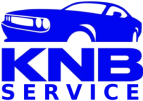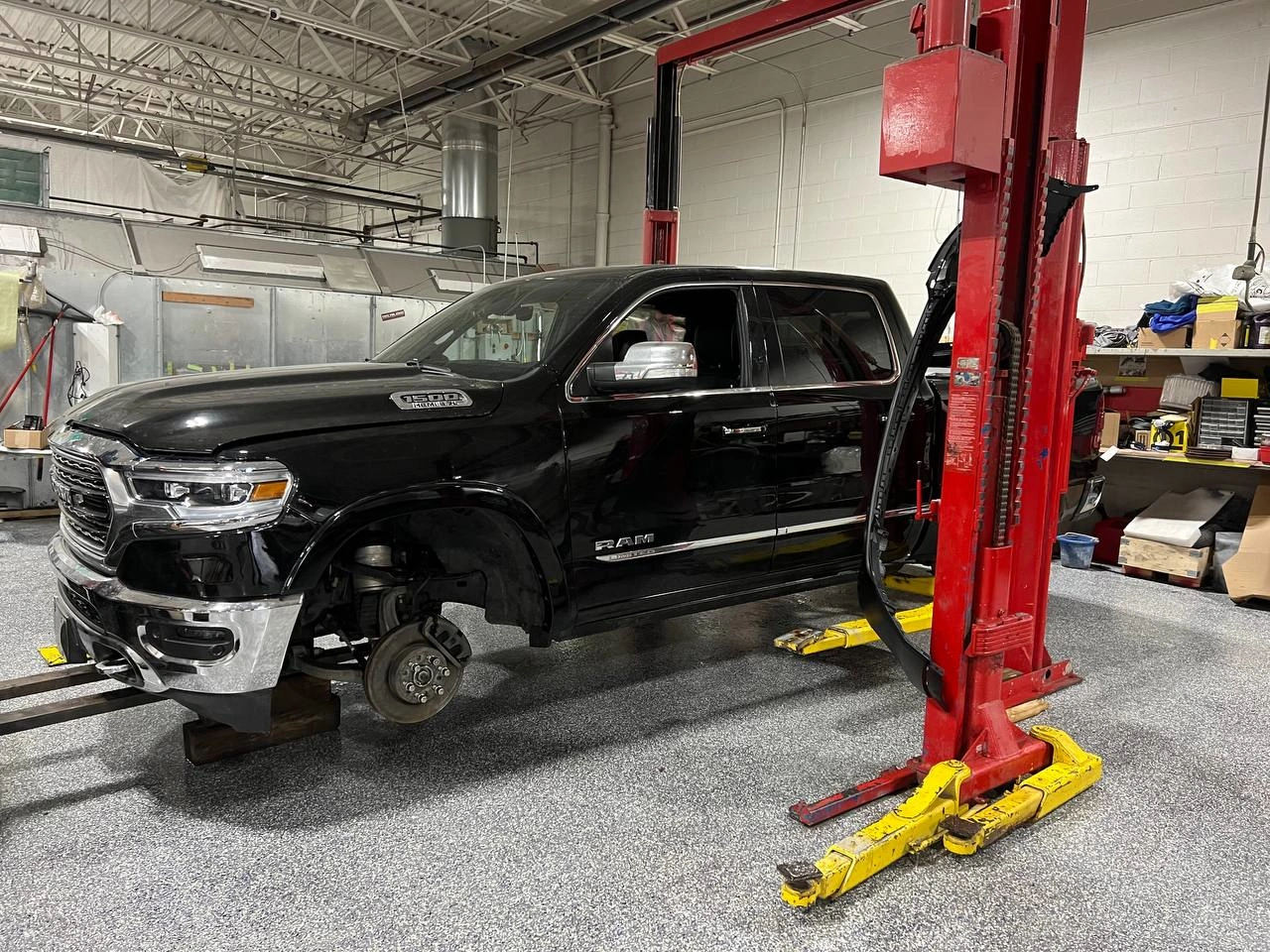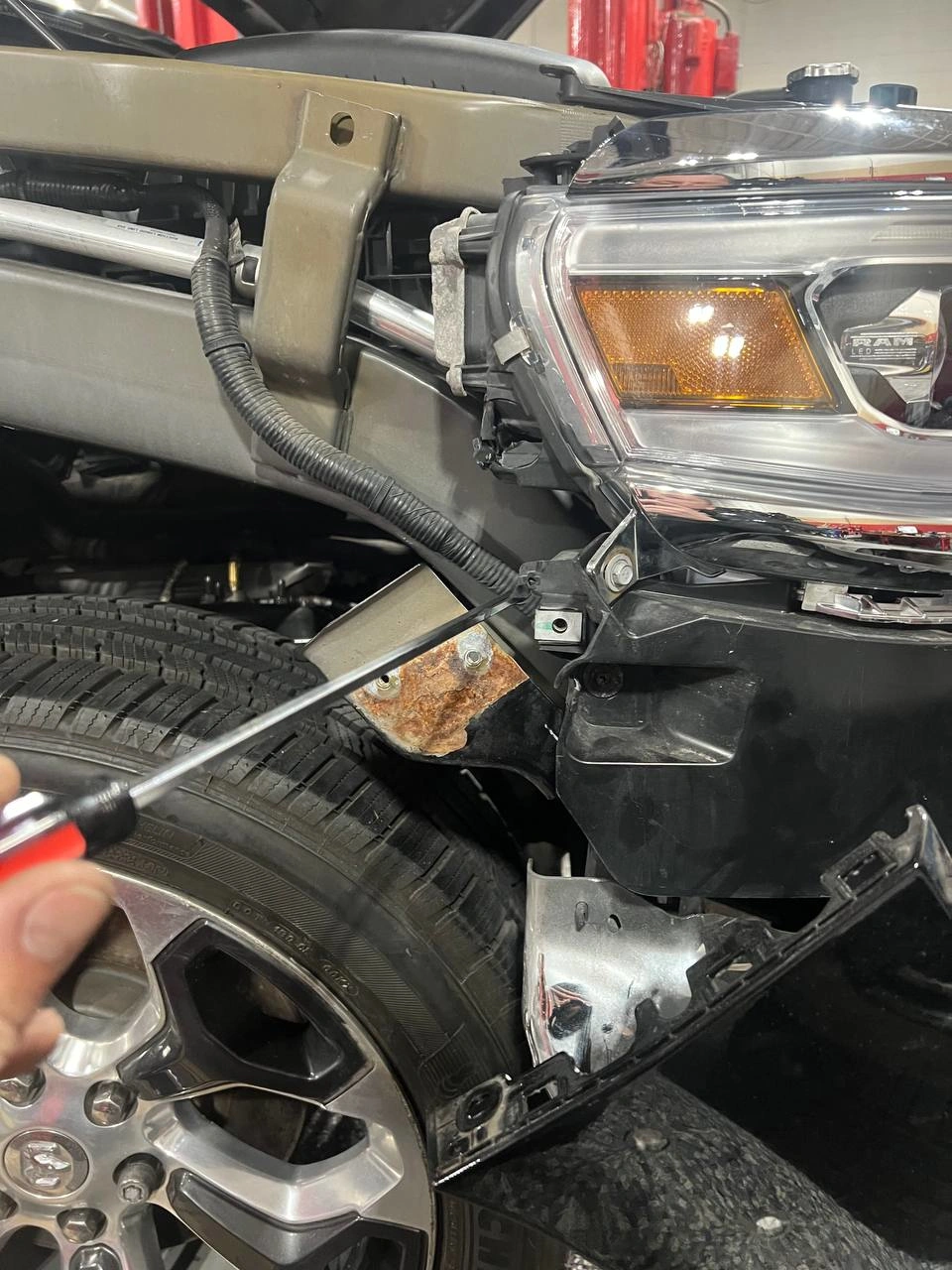I. Introduction
- Brief overview of the importance of regular car maintenance and bodywork
- Explanation of the purpose of this article: to identify signs that indicate a car needs immediate bodywork
II. Top 10 Signs Your Car Needs Immediate Bodywork
- Dents and Scratches: Explanation of how dents and scratches can lead to rust and further damage if left unrepaired
- Rust Spots: Discussion of the dangers of rust and how to identify rust spots on a car’s body
- Fender Damage: Explanation of how fender damage can affect a car’s safety and performance
- Bumper Damage: Discussion of the importance of a car’s bumper and how damage can compromise safety
- Hood and Trunk Lid Damage: Explanation of how damage to these areas can affect a car’s structural integrity
- Door and Window Damage: Discussion of how damage to doors and windows can compromise a car’s safety and security
- Frame Damage: Explanation of the dangers of frame damage and how it can affect a car’s overall stability
- Paint Damage: Discussion of how paint damage can lead to rust and further damage if left unrepaired
- Moldings and Trim Damage: Explanation of how damage to moldings and trim can affect a car’s appearance and value
- Collision Damage: Discussion of the importance of addressing collision damage promptly to prevent further damage
III. How to Address These Signs
- Explanation of the steps to take when identifying any of the above signs
- Discussion of the importance of seeking professional help from a qualified auto body shop
IV. Conclusion
- Summary of the top 10 signs that indicate a car needs immediate bodywork
- Final thoughts on the importance of regular car maintenance and bodywork
Introduction
As a car owner, it’s essential to keep your vehicle in good condition to ensure your safety on the road and maintain its value. Regular car maintenance and bodywork are crucial to prevent minor issues from becoming major problems. In this article, we’ll discuss the top 10 signs that indicate your car needs immediate bodywork and provide guidance on how to address them. We’ll also explore the importance of regular maintenance and the consequences of neglecting your car’s bodywork.
The importance of regular car maintenance cannot be overstated. A well-maintained car is not only safer to drive, but it’s also more fuel-efficient, reliable, and valuable. On the other hand, neglecting your car’s maintenance can lead to a range of problems, from minor issues like dents and scratches to major problems like engine failure and collision damage. By staying on top of your car’s maintenance, you can prevent many of these problems from occurring in the first place.
Top 10 Signs Your Car Needs Immediate Bodywork
1. Dents and Scratches
Dents and scratches may seem like minor issues, but they can lead to rust and further damage if left unrepaired. Rust can spread quickly, compromising the structural integrity of your car’s body and potentially causing safety hazards. If you notice any dents or scratches on your car’s surface, it’s essential to address them promptly. Even small dents and scratches can create an entry point for rust, which can spread rapidly and cause significant damage.
In addition to the risk of rust, dents and scratches can also affect your car’s appearance and value. A car with dents and scratches can look old and neglected, which can reduce its value and appeal to potential buyers. By addressing dents and scratches promptly, you can maintain your car’s appearance and value, as well as prevent more serious problems from developing.
2. Rust Spots
Rust spots are a clear indication that your car’s body is deteriorating. Rust can weaken the metal, causing it to flake off and create holes. If left unchecked, rust can spread to other areas of the car, leading to costly repairs. Regularly inspect your car’s body for rust spots, and address them immediately to prevent further damage. Rust spots can be particularly problematic in areas like the trunk, hood, and doors, where they can create weak points in the car’s structure.
To prevent rust spots from forming, it’s essential to keep your car clean and dry. Regularly wash your car, paying particular attention to areas that are prone to rust, like the wheels and wheel wells. You should also apply a rust-inhibiting coating to your car’s body, especially in areas that are exposed to the elements.
3. Fender Damage
Fender damage can affect your car’s safety and performance. A damaged fender can compromise the car’s aerodynamics, leading to reduced fuel efficiency and increased wind noise. Moreover, a damaged fender can also affect the car’s alignment, causing uneven tire wear and potentially leading to accidents. If you notice any damage to your car’s fender, it’s essential to address it promptly to prevent further problems.
Fender damage can be caused by a range of factors, including collisions, parking accidents, and even minor bumps and scrapes. To prevent fender damage, it’s essential to be careful when parking and driving, and to avoid situations that could put your car at risk. You should also regularly inspect your car’s fender for damage, and address any issues promptly.
4. Bumper Damage
A car’s bumper is designed to absorb impact and protect the vehicle’s body in the event of a collision. However, if the bumper is damaged, it can compromise the car’s safety. A damaged bumper can also affect the car’s appearance, reducing its value and appeal. If you notice any damage to your car’s bumper, it’s essential to address it promptly to prevent further problems.
Bumper damage can be caused by a range of factors, including collisions, parking accidents, and even minor bumps and scrapes. To prevent bumper damage, it’s essential to be careful when parking and driving, and to avoid situations that could put your car at risk. You should also regularly inspect your car’s bumper for damage, and address any issues promptly.
5. Hood and Trunk Lid Damage
Damage to the hood and trunk lid can affect the car’s structural integrity. A damaged hood or trunk lid can compromise the car’s safety, as it can create a weak point in the vehicle’s body. Moreover, a damaged hood or trunk lid can also affect the car’s appearance, reducing its value and appeal. If you notice any damage to your car’s hood or trunk lid, it’s essential to address it promptly to prevent further problems.
Hood and trunk lid damage can be caused by a range of factors, including collisions, parking accidents, and even minor bumps and scrapes. To prevent hood and trunk lid damage, it’s essential to be careful when parking and driving, and to avoid situations that could put your car at risk. You should also regularly inspect your car’s hood and trunk lid for damage, and address any issues promptly.
6. Door and Window Damage
Damage to doors and windows can compromise the car’s safety and security. A damaged door or window can create an entry point for thieves, and a broken window can also compromise the car’s structural integrity. Regularly inspect your car’s doors and windows for damage, and address any issues promptly to prevent further problems.
Door and window damage can be caused by a range of factors, including collisions, parking accidents, and even minor bumps and scrapes. To prevent door and window damage, it’s essential to be careful when parking and driving, and to avoid situations that could put your car at risk. You should also regularly inspect your car’s doors and windows for damage, and address any issues promptly.
7. Frame Damage
Frame damage is a serious issue that can affect the car’s overall stability. A damaged frame can compromise the car’s safety, as it can create a weak point in the vehicle’s body. Frame damage can also affect the car’s alignment, causing uneven tire wear and potentially leading to accidents. If you notice any damage to your car’s frame, it’s essential to address it promptly to prevent further problems.
Frame damage can be caused by a range of factors, including collisions, parking accidents, and even minor bumps and scrapes. To prevent frame damage, it’s essential to be careful when parking and driving, and to avoid situations that could put your car at risk. You should also regularly inspect your car’s frame for damage, and address any issues promptly.
8. Paint Damage
Paint damage can lead to rust and further damage if left unrepaired. Paint protects the car’s body from the elements, and damage to the paint can create an entry point for rust. Regularly inspect your car’s paint for damage, and address any issues promptly to prevent further damage.
Paint damage can be caused by a range of factors, including minor bumps and scrapes, as well as exposure to the elements. To prevent paint damage, it’s essential to keep your car clean and dry, and to avoid situations that could put your car at risk. You should also regularly inspect your car’s paint for damage, and address any issues promptly.
9. Moldings and Trim Damage
Damage to moldings and trim can affect the car’s appearance and value. Moldings and trim are designed to protect the car’s body from damage, and damage to these components can create an entry point for rust and other issues. Regularly inspect your car’s moldings and trim for damage, and address any issues promptly to prevent further problems.
Moldings and trim damage can be caused by a range of factors, including minor bumps and scrapes, as well as exposure to the elements. To prevent moldings and trim damage, it’s essential to keep your car clean and dry, and to avoid situations that could put your car at risk. You should also regularly inspect your car’s moldings and trim for damage, and address any issues promptly.
10. Collision Damage
Collision damage is a serious issue that requires immediate attention. If your car has been involved in a collision, it’s essential to address any damage promptly to prevent further issues. Collision damage can affect the car’s safety, performance, and value, so it’s crucial to seek professional help from a qualified auto body shop.
Collision damage can be caused by a range of factors, including accidents, parking accidents, and even minor bumps and scrapes. To prevent collision damage, it’s essential to be careful when parking and driving, and to avoid situations that could put your car at risk. You should also regularly inspect your car’s body for damage, and address any issues promptly.
How to Address These Signs
If you’ve identified any of the signs mentioned above, it’s essential to address them promptly. Here are the steps to take:
* Inspect your car regularly to identify any damage or issues
* Seek professional help from a qualified auto body shop
* Address any damage or issues promptly to prevent further damage
* Keep your car well-maintained to prevent minor issues from becoming major problems
Regular maintenance is key to preventing many of the issues mentioned above. By staying on top of your car’s maintenance, you can prevent minor problems from becoming major ones, and keep your car running safely and efficiently. Regular maintenance can also help to identify potential issues before they become major problems, saving you time and money in the long run.
Conclusion
In conclusion, regular car maintenance and bodywork are crucial to prevent minor issues from becoming major problems. By identifying the top 10 signs that indicate your car needs immediate bodywork, you can address any issues promptly and prevent further damage. Remember to seek professional help from a qualified auto body shop, and keep your car well-maintained to ensure your safety on the road and maintain its value. By following these tips, you can keep your car running safely and efficiently, and prevent many of the issues mentioned above from occurring in the first place.


